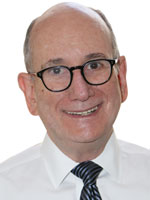Networking
Why it’s the No. 1 benefit of membership in CAALA
I was recently asked how many events the CAALA staff is responsible for during the year. I answered that including Board and Executive Committee meetings, mixers, seminars, webinars, roundtables, phone banks, special events and the CAALA Convention, staff puts on 97 different programs and events.
The person then asked, “How many are networking events?”
My answer was “All of them.”
Most association professionals wouldn’t be surprised to hear me say that.
Listen to the experts
Greg Wilson, of the California District Attorneys Association and CalSAE, California’s leading association-management organization, wrote that “for associations that serve career-minded individuals, networking is often cited as the top reason for joining.”
Lou Kornet is President of The Markens Group, an association management company. He wrote that when he speaks to an association client about their organization’s value, invariably he mentions networking. “Through networking, members broaden their knowledge base and make connections that foster both organizational and personal advancement.”
Kornet could have been talking about CAALA.
CAALA has long been recognized for its premier education programs, the member-only resources and tools it provides, the overall quality of our events and our ability to give a voice to plaintiff trial attorneys in Southern California.
But as CAALA’s membership continues to grow and more members participate in the myriad of events CAALA presents, it’s obvious that networking is the No. 1 benefit of membership in our association.
At every event we put on, members arrive early and stay late to talk to other members. This is true for new lawyers or seasoned veterans. While the speakers and program content are still key, the connection opportunities are big reasons why members attend. Nearly every CAALA event begins with social or networking time, even if it’s just waiting for the program to start.
Kornet of the Markens Group asks, “Where else but in your association, can you connect with and learn from the thought leaders and best practitioners in the industry?”
In my 12 years as CAALA’s Executive Director, I have heard many of CAALA’s top attorneys advocate the importance of using CAALA to connect. When I listen to the likes of Mike Alder, Gary Dordick, Arash Homampour or Ricardo Echeverria speak, they often give the same advice. “Come to as many CAALA events as you can and network, network, network.”
They each believe that by attending events you will not only meet CAALA members who will be professional resources, but they may also become lifelong friends.
So now you know that CAALA provides networking opportunities and that they can help you. But, be honest, how many of you don’t like networking, or just aren’t good at it? I suspect that the answer is “A lot.”
As easy as 1,2,3
Since I always try to provide a service in my columns, I’d like to provide you with some networking tips.
These come from a variety of sources but I want to acknowledge CAALA attorneys like Mike Alder and Gary Dordick and networking professionals Colleen DeBaise from Entrepreneur.com., Christina DesMarais from Inc.com and Betsy Berkhemer-Credaire, President of Berkhemer Clayton, Inc., a Los Angeles retained executive search firm.
(1.) Before the event
Use the CAALA web site or LinkedIn to find out about members attending that you want to meet. Plan ahead of time. Some people have a hard time starting conversations with strangers, but doing a bit of homework before an event can help you come up with good questions to ask. Since everyone in the room practices law and went to law school, asking about those two things is an easy way to break the ice. Asking about food, travel or sports is also a good way to start a conversation. Think about your description of yourself. Keep it short but make sure you include the key points you want others to know. Don’t forget to stock up on business cards. Never run out of cards – not smart, and, also embarrassing.
(2.) At the event
Resist the urge to get there late. Early attendees find it’s calmer and quieter before the mad rush begins. It’s also easier to find people who don’t have conversation partners. Mike Alder suggests that when you arrive, do a visual survey of the room and plan a path to make sure you connect with who you want to meet and greet. Wade right in, don’t stand around the edges of the room waiting for someone to approach you. Start by introducing yourself, but listen closely to their name. Make them feel special. Look them in the eye, repeat their name and listen to what they have to say. Practice listening. When you ask someone a question, listen to their answer. People tend to remember those they have a connection with. Don’t hijack the conversation.
(3.) After the event
Remember to follow up. Connecting is where the relationship begins, not ends. Get in touch within 48 hours of the event. This will show that you’re interested and available. Make reference to something you discussed, so your contact remembers you. If during your conversation, you learned about something that would be helpful to your contact, follow up by sending an article or a link to a web site that may be of interest to them. It sounds daunting, but sending a personal email to the people you met is the best way to further the relationship.
Stuart Zanville

Stuart Zanville is the Executive Director of the Consumer Attorneys Association of Los Angeles (CAALA). Contact him at (213) 487-1212 or by e-mail: stuart@caala.org.
Copyright ©
2025
by the author.
For reprint permission, contact the publisher: Advocate Magazine
